When SimCity got serious: the story of Maxis Business Simulations and SimRefinery 

SimCity wasn’t meant to be taken seriously.
The game was inspired by research on real-world urban planning concepts,2,3 and although it was created as a way for players to experiment with running a city, the goal was to be fun rather than accurate. “I realized early on, because of chaos theory and a lot of other things,” said designer Will Wright, “that it’s kind of hopeless to approach simulations like that, as predictive endeavors. But we’ve kind of caricatured our systems. SimCity was always meant to be a caricature of the way a city works, not a realistic model of the way a city works.”4
“I think if we tried to make it realistic, we would be doing something that we wouldn’t want to do,” Wright said in an interview in 1999.5 But that didn’t stop companies from believing Maxis could design realistic simulations. Will Wright didn’t believe that was even possible. “Many people come to us and say, ‘You should do the professional version,'” he continued. “That really scares me because I know how pathetic the simulations are, really, compared to reality. The last thing I want people to come away with is that we’re on the verge of being able to simulate the way that a city really develops, because we’re not.”5
Maxis didn’t want to make professional simulation games. But for two brief, strange years, they did.
From 1992 to 1994, a division called Maxis Business Simulations was responsible for making serious professional simulations that looked and played like Maxis games. After Maxis cut the division loose, the company continued to operate independently, taking the simulation game genre in their own direction. Their games found their way into corporate training rooms and even went as far as the White House.
Almost nothing they developed was ever released to the public. But their software raises questions about the role we want games to play in society.
Over the past few years, I’ve spoken with employees from Maxis and the Business Simulations team to learn more about their company. For the first time, this is their story.
Index
1. Delta Logic
2. SimRefinery
3. Growth
4. SimHealth
5. Thinking Tools
6. Collapse
7. Finale
Special thanks
References
. . .
1. Delta Logic
The history of Maxis Business Simulations is really a biography of John Hiles.
Hiles had just left the Peace Corps in the 1970s when he decided to teach himself programming. He was interested in astronomy,6 and so he started off his programming career with the aerospace industry, working on the Skylab space station that launched in 1973. He quickly made his way into the nascent Silicon Valley tech industry.7
By the mid-80s, he had become the senior vice president of product development at Digital Research in Monterey, California.8 Digital Research was a company that arguably had their biggest days behind them. They had designed the operating system CP/M, which powered most computers in the United States until IBM and Microsoft took over the personal computer market; within a decade, they would be out of business. But it was here, and in other jobs in the early tech industry, that Hiles started to think about computers differently.
Hiles wanted to learn more about artificial intelligence. Not like trying to make computers smart, because as he put it, “that turned out to largely be baloney.” Computer technology was nowhere near advanced enough for that yet. “It’s like saying we’re gonna start building a 40-story building on the 14th floor,” Hiles said. He wanted to start lower, at the level of unconscious thinking. He had been reading about cognitive theory, and he was fascinated by how the brain makes it possible for us to do things like speak and interpret language, all without a conscious action on our part, just an instinctive behavior.7
Could you make a computer think like this instead? Could you give a computer program an unconscious mind?
“For the entire time I knew him,” Bruce Skidmore remembered, “he had ideas just bubbling out of his head all the time, and it was restless trying to scramble to keep up to make some of them real.” Skidmore was a software networking manager at Digital Research, and his impression was the same one everyone had about John Hiles: he was a fast thinker with ideas that were almost too big to be practical.9
Digital Research had given Hiles the leeway to explore his big ideas in a new division called Interconnexions, but even then, he found it constraining.9,67 So shortly after in 1986, he quit to start his own company.10 Skidmore followed, as did another programmer from Digital Research, Bruce Montague. “We used to joke that we were gonna name it ‘John & Bruce,'” Skidmore said. They went with the name Delta Logic instead.9
The tech news service Microbytes Daily described Delta Logic as “a group of refugees from Digital Research.”11
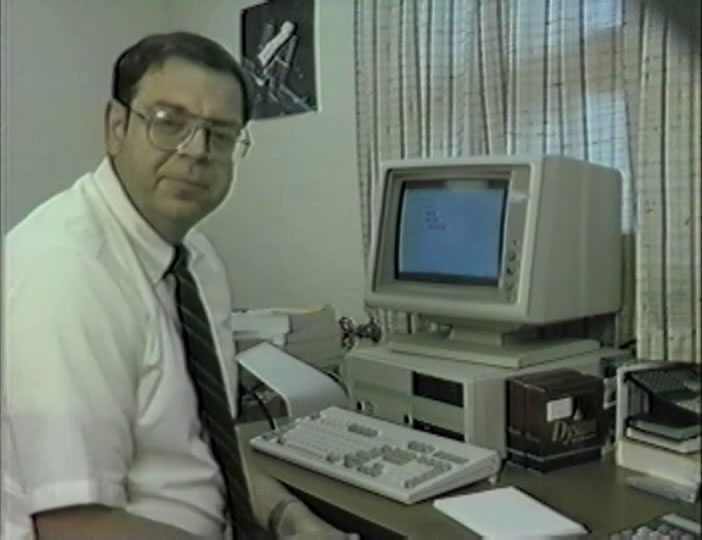
John Hiles demonstrates Entryway, a software platform by Delta Logic. Video courtesy of Susan Hiles.6
At first, they weren’t quite sure what the company was actually going to do. Skidmore vaguely remembers that their first product was squashed when Digital Research objected that it was too similar to their own software, perhaps fearing a misappropriation of trade secrets.9 Delta Logic was eventually scooped up by another Silicon Valley start-up, the Poqet Computer Corporation, where they developed a software platform called Entryway for the corporation’s line of pocket computers.11,12
At this point, Delta Logic was small and scrappy. The promotional video for Entryway was a homemade production filmed at Hiles’s home, re-recorded over a home astronomy video, with a piece of loose-leaf paper used as a clapboard in front of the camera. Hiles’s voice is all but drowned out by the classical music being played in the background.6
Hiles and his team – now including programmer Greg Rossi, another escapee from Digital Research9,10 – still wanted to explore this concept of computer programs that could think.
He was interested in the idea of “agent-based modeling,” a way of simulating complicated behavior from the bottom-up. The way he explained it in a lecture at George Washington University in 1995, he used the example of writing a computer program that simulates a flock of birds. We could come up with a complicated formula to control an entire flock of birds flying around. Or instead, we could make each of the birds “think” for themselves, and when they’re all together, we can see larger patterns of behavior emerge.
It’s easy enough to do with birds. But what if we could build that idea into something about society? What if we could use this bottom-up approach to simulate the behavior of a business? Or a marketplace? Or a country?13 If we could make a simulation like this, it could help us better understand the world.
It was a big idea, but they needed to find a way to make a simulation like this into an actual product.7 In 1989, they found their answer. It was a new computer game called SimCity.
SimWhatever
SimCity changed the way people think about simulation games. It was an astounding, unexpected success for Maxis when it was released in 1989, with over $5 million sales in the first two years and nearly tripling the size of the company. Suddenly, this quirky boutique software developer was stretched so thin that CEO and co-founder Jeff Braun was the only manager for a staff of 20 people – even managing the financial staff, a problem that was swiftly corrected after Maxis got audited by the IRS.14
But more importantly than being a financial success for the company, SimCity started to influence the way that the public thought about computer simulations and urban planning. There’s no better example of this than a stunt by the Providence Journal during the 1990 Democratic primary, when the candidates for mayor of Providence, Rhode Island were invited to play the newly popular city-building game SimCity. It was a close race, and the results of the SimCity contest seem to have actually affected the outcome, with one candidate judged so harshly for their mistakes playing the game that they believed it cost them the election.15 Whether or not SimCity could actually simulate how a city works, in people’s minds, it was close enough.
To an extent, this is what Will Wright wanted to happen. For Wright, games were a way of helping people create “mental models” for understanding parts of the world. The team at Maxis would research a topic like urban dynamics – or something like ant colony behavior, in the case of another game they made called SimAnt – and create a game where players could experiment with those ideas. The goal wasn’t to teach anything directly, but rather to help the player get the model of SimCity in their head, so that playing this game could help them understand how the different systems within a city interact.3,17
For many people though, that nuance was lost, and instead they treated it like Maxis could build accurate simulations of the real world. And they wouldn’t stop asking about it. “In the first couple months after SimCity appeared,” Wright told Wired, “we were approached by a number of companies saying, ‘Hey that’s great! If you can do a city like that, we want you to do SimPizzaHut, or SimWhatever.’ We thought these things were so weird that we said no, but they kept coming in.”16
“So at some point, as we got big enough, we decided to give it a go.”16
John Hiles knew about SimCity. He believed in the power of building mental models too, and he saw something in SimCity that was missing from the simulation modeling work happening at Delta Logic: it was fun. It had an intuitive interface and friendly graphics. That was the missing ingredient. Hiles believed that if they teamed up – Maxis’s style with Delta Logic’s systems – they could create simulations that were fun and powerful. Maxis had been looking for new partners for software development, so Hiles used that as an opportunity to get in their orbit. He approached Jeff Braun, and in 1991, his company became a contractor for Maxis.7,9
That might have seemed like an unusual move for Maxis. Will Wright considered his games to be more like toys,17 and he even though he embraced the educational side of Maxis’s software,18 he doubted the real-world value of simulation games.5,7,9
It turns out that the companies had a lot in common. “In many ways, we were making science ‘fun,’ and we knew we were making games like no other game company could. I think most of us thought Monterey was simply an extension of that culture,” Maxis producer Mike Perry said. “Will Wright tends to make everyone around him smarter, or at least more curious, so [they] seemed like a comfortable match with [us]. And John Hiles was even smarter.”19
A big part of the reason Maxis was eager to join with a partner was because it meant Maxis would have less work to do. “We were getting a lot of external interest in making business sims,” Perry explained, “so it was great that they could take on that work.”19 Jeff Braun said that under the arrangement they made, he could give Delta Logic a bunch of code and then “let them run with it. I didn’t want to distract from the games team.”20
But it also might have been the result of a mandate from a new investor. As part of the company’s restructuring in the wake of SimCity, in the summer of 1992, Maxis accepted a $10 million investment from Warburg Pincus Ventures, who received a 30% stake in the company and a seat at the board. According to Braun, Warburg Pincus wanted Maxis to start doing business simulation games more seriously.14,20,21
With their new directive, Maxis decided to jump in all the way. That July, they purchased Delta Logic, turning them into a new division of the company – Maxis Business Simulations.22 John Hiles was named VP and general manager.23
Their first project? Chevron wanted them to make a game about an oil refinery.
. . .
2. SimRefinery

Satellite view of the Chevron Richmond Refinery. Via Microsoft Maps, copyright Vexcel Imaging.
Oil refineries are really, really complicated. That’s why Chevron wanted Maxis to make them a game like SimCity, to teach the employees at their oil refinery in Richmond, California how it all worked.22
To be clear, they didn’t want a game that was supposed to accurately train people how to run an oil refinery or replace an education in chemical engineering. That would’ve been incredibly dangerous. What they wanted instead was something that showed you how the dynamics of the refinery worked, how all the different pieces invisibly fit together, like SimCity did for cities.
The operators at the refinery sometimes had trouble getting a big picture for what was happening at the plant beyond their particular area of focus. “The whole goal of this was to teach operators that they are part of a bigger system,” Skidmore said. “Their concern at the time was that operators tended to be very focused on their one plant, and their one thing they do, and so [they] weren’t keeping in mind that what they do affected other parts of the plant. So they wanted a training tool that allowed operators to manipulate inputs and outputs of the various pieces of the refinery process to see how they impact.”9
The non-technical staff at the Richmond refinery needed to know how it worked too. The people in human resources and accounting weren’t chemical engineers, but it would help their work to see how the different areas of the plant were networked together, how one department affected another department.7,22
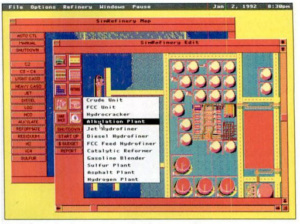
One of the few surviving screenshots of SimRefinery. The colors in the screenshot appear to be glitched or incorrect.24
Chevron paid Maxis $75,000 for a prototype of a refinery simulator.22,25 The project began even before Maxis bought Delta Logic, back when they were still just contractors.9
How do you get started on a project like this? They did it the same way Maxis developed their own games: they did research.
John Hiles and the Bruces took a visit to the Chevron Richmond Refinery, where they met with a specialist who took them on a tour of the plant and explained how it worked. It was a collaborative relationship with Chevron throughout the development process; Chevron sent them the raw formulas they used at the refinery, and as Maxis Business Simulations turned that into a game, Chevron would double-check their work.9 Hiles compared it to being a field anthropologist:
I came up and said, “How about, these concepts, principles, and their relation?” and they say, “Oh, John, you screwed up, look at – this is wrong.” And I say, “Okay. Help me understand what to do about that.” They did, and they taught me. And all I was doing was field work. I was asking questions and listening carefully. And I’d say, “What about this?” I’d look at a photograph of their oil refinery, and I’d say, “What’s this big pile of sulfur doing here?” “Oh, well you weren’t paying attention to the chemistry, John.”7
Neither Hiles or Skidmore could recall the Chevron employee’s name, though they remembered him as “a genuine, brilliant, super-experienced guy who was patient enough to teach us all about oil refineries,” as Hiles said.7 Skidmore called him a guy who “knew the process of refining backwards and forwards.”9 In all likelihood, it was Terrell Touchstone, a staff engineer at Chevron Richmond. Touchstone’s memory about SimRefinery is hazy, but he suspects that he may have been the only person at Chevron who actually worked hands-on with the game. Or at least, he was the one who sent Business Simulations all the math behind the refinery.26
“The platform coding was all done by [Hiles’ team] using Maxis’ cobbled together development environment,” Touchstone told me. “We – but again most likely just myself – only specified the underlying physical (refinery processing) models as sets of multivariable equations. These were standard component mass and energy balances which were intentionally kept as simple as possible. John did all the real magic.”26
Touchstone’s description of the “cobbled together development environment” seems to be accurate. According to Bruce Skidmore, Maxis supplied Business Simulations with the code for SimFarm, which they heavily modified into a new patchwork system that could support what they were trying to do. “We started with a framework that Maxis had,” Skidmore said. “It was not a tool, per se, but it was the guts of another game, I believe, so we could learn how to manipulate the graphics on the screen.”9 They called this the Whiteboard engine, a proprietary system designed by Greg Rossi that bridged the gap between their agent-based simulation modeling software and the graphical interface.10
Unfortunately, I was unable to reach Rossi or Bruce Montague, who may have also helped design the Whiteboard engine, but Skidmore had nothing but praise for them both. He described Montague as “technical, very technical,” and called the core team from Delta Logic “just phenomenal people to work with.”9
How to blow up the refinery
In an editorial in Forbes, Esther Dyson – who would later serve on the board of Maxis Business Simulations once it was spun off into its own company – described how SimRefinery was played:
The refinery model includes inputs, various grades of oil at various prices; outputs, petroleum products at various prices; and a whole set of refinery tradeoffs. Produce more heating oil, for example, and you have less left over for high-priced gasoline and jet fuel. Skimp on maintenance spending and a plant goes down, cutting production for a week, lowering the plant’s income, and cutting further into the maintenance budget. […]
The overall objective is to maximize the refinery’s long-term profitability, or whatever you want it to be. Like a business, the game doesn’t come to a conclusion; you just keep trying to get better from period to period.27
SimRefinery also let players record and play back their actions. It could be used as an evaluation method, but it also allowed instructors to quickly make their own scenarios for their trainees to play, without needing programming experience.28
It sounds a lot like other Maxis games, an open-ended game where you were meant to experiment and set your own objectives. And like other Maxis games, there were some dramatic ways to screw things up. Bruce Skidmore said that if you really messed up the chemical balance, you could actually cause part of the refinery to explode.9
Anyone who’s played SimCity knows that the best part of the game is blowing things up. It’s the universal SimCity experience. Maxis even gave you a Disaster menu to make giant monsters attack. You were meant to destroy everything once in a while.
This was even the main takeaway for some people. In her book on educational game research, Engineering Play, Mizuko Ito remembers a story where she introduced SimCity 2000 to a child at the Boys and Girls Club:
“Do you know SimCity?” I asked a boy whom I hadn’t seen before, maybe seven years old or so. “Yeah!” he declared. “That’s the game where you blow up the cities!”29
Destroying a simulation can be an educational experience too, and this is how SimRefinery was meant to be played. John Hiles said that most of the trainers at Chevron wanted to use it as a conventional training tool, “but some of the more astute teachers said, ‘Let’s just get you started here by seeing if you can wreck the oil refinery, if you can abuse the inputs and the settings and essentially get fired,'” he remembered.
That was a legitimate way to learn how a refinery worked: if you start breaking the refinery, you can see how ruining one part of the plant will affect the other parts of the plant. “The tool – the game – was agnostic,” Hiles explained, correcting himself. “It would work for someone trying to ruin an oil refinery just as well as somebody trying to run it efficiently.”7
SimRefinery was finished in fall 1992,27 earlier than the 1993 date that’s usually reported online. The trademark registration for SimRefinery suggests that the game was officially handed over to Chevron on Monday, October 26, 1992. (It’s unusual to have a specific release date for a corporate training product, but that’s a result of Maxis trademarking the SimRefinery name almost a year after it was completed.)30
Chevron liked it.25 They started testing the game with their staff in September, and Chevron reported that communication from marketing and finance staff “improved dramatically.”37 Speaking to The Plain Dealer in Cleveland, Chevron training specialist Susan Gustin praised the game’s effectiveness. “Just dumping information on people isn’t effective,” she said. “People only remember what they use.”31 She told Computerworld, “Some of these relationships aren’t at all obvious until you play the game a bit.”22
It seems to have even won over one of its critics, Will Wright. “He was initially skeptical,” Skidmore said. “I think when we eventually finished SimRefinery, I think he approved of it.”9

Will Wright and Jeff Braun pose with a computer running SimRefinery.32
But still, SimRefinery didn’t get widespread use within Chevron. The press – as well as Terrell Touchstone33 – characterized SimRefinery as being a prototype, something that might evolve into a final product later.21,25 Esther Dyson called it a “pilot project,” which would lead to “other simulated refineries” if it was successful.27 San Francisco’s Upside magazine went as far as saying it was never implemented at the company at all. Touchstone chalks it up to the political environment at Chevron when SimRefinery was developed. “In the middle of downsizing and layoffs, a computer game wasn’t politically acceptable,” he told Upside.34
Despite this, SimRefinery seems to have found a quiet second life in the engineering industry. Touchstone reported in 1993 that the University of California Davis wanted to use SimRefinery in their teaching;33 Professor Karen McDonald at the UC Davis Department of Chemical Engineering said they had used the game in their computer labs as late as 1997.35 Even within Chevron, the game still received attention years later. Bruce Skidmore says that after he left Maxis Business Simulations, he was contacted by an employee at Chevron, who requested an update to the program.9 Hiles even claimed SimRefinery was in use by an unidentified oil refinery as recently as 2016, but given the technical issues with maintaining a 24-year-old computer program for office use, that seems unlikely.7
Whatever the long-term interest in SimRefinery, it wasn’t adopted at Chevron out of the gate, and that was the start of a pattern for the games by Maxis Business Simulations – a skepticism towards the idea that a simulation game could teach you something. Or should teach you something.
. . .
3. Growth

Around this time in 1992 and 1993, Maxis was working on their next big game, SimCity 2000. Meanwhile, over in Monterey, this separate wing of the company was doing their own thing. They had wrapped up their work on an oil refinery simulation for Chevron, and now they had even more business simulations lined up.
Their next game was SimEnvironment, commissioned by the Logistics Management Institute, a contractor for the Environmental Protection Agency.9,36 Skidmore remembers that the project – led by the other Bruce, this time28 – was less a game than it was an interactive demonstration, designed to show the spread of pollution and the challenges of toxic waste site cleanup. “I don’t think in this case it was a simulation training so much as a way to explore [these concepts],”9 Skidmore recalled. The game would be used to help summarize complicated scientific data for laypeople, allowing them to see how pollution would affect different climates and soils.37
They also worked on SimSite, a simulation for managing the closure of a military base.31 And there’s other game titles littered around in press reports, like SimPower, a game modeling the operation of a power grid, developed jointly for the Pacific Gas & Electric Company and the Electric Power Research Institute. The game would have allowed players to compare the efficiency of different types of power sources and generators.21,22,37,38
None of these titles are well-remembered by the Maxis Business Simulations staff. They’re uncertain whether those games were even actually finished. SimEnvironment was completed,9 but a game like SimPower seems to have faded away, perhaps never even making it out of the pre-planning stage, only existing in one sentence in a magazine article.
This was typical for Business Simulations: bold concepts and partnerships that were difficult to bring to fruition. It was part of the way Hiles did business. He was the face of the company, and he tried to get their name out there as much as possible, even if it sometimes didn’t yield results. “John was such an incredible idea man, and he saw it as his mission for the company to get the word out about agent-based modeling,” Skidmore said. “So he was on the road three weeks out of four, attending conferences and giving lectures, and this whole time, he would talk to people, and these ideas would just spring forth. And he’d come back to us and throw it out there, but as often as not, the entities that he’d been talking to would not follow through.”9
But John Hiles wanted Maxis Business Simulations to keep growing. He wanted the division to reach $2 million annual revenue,22 a number that might have been unattainable, but it was their moonshot. So they kept pitching more projects to more companies.
While going through their home, the family of John Hiles found one of these original pitches – a proposal for an unproduced game by Maxis called SimEnergy.

Excerpt from the pitch document for SimEnergy.28
If it had been produced, SimEnergy would have been the oddest game in the entire Sim series: an educational game for schools that would teach students about energy consumption by following the impact of their lifestyle choices across multiple generations.
The proposal was made for an unnamed Japanese electrical company, identified only by an employee named “Mr. Majima.” There’s no date on the document, but the references to other Maxis games places it somewhere around 1992.
The pitch document is a walkthrough of SimEnergy, following a player named Yoshi as he goes through forty years of his life as a manager at a power plant:
[Yoshi] chooses his life style by picking a house, car, motorcycle, two TVs, some appliances, and a subway ride to work. […] Now SimEnergy asks Yoshi whether his use of energy is about average, or much less than others, or much more. […]He points at his car, next points at a gas pump, then finally a supertanker. SimEnergy shows how these are connected and displays background information. Next Yoshi points at his TV set. SimEnergy shows him the TV’s energy costs: how much energy it took to build and how much it takes to operate.
Now Yoshi goes to work, where he is power utility manager. He decides to build a mix of different kinds of power plants. But when his customers complain about high costs, Yoshi decides to spend less on training and safety at his old coal-powered plant. This is a mistake that leads to accidents and reduced efficiency. Yoshi has a problem: complaints about cost led to reduced spending on safety, that led to lower efficiency and higher cost; more complaints followed.
Then the game jumps forward twenty years, when Yoshi’s children have all grown up. They confront him about the choices he made in his life. Then the clock advances another twenty years, as Yoshi comes face-to-face with his grandchildren. “What will their lives be like?”28
This is wild. Not only would it have been a combination of a power plant simulation and a life simulation, it would’ve forced players to reckon with the long-term environmental impact of their choices. Even more than a game like SimRefinery or SimEnvironment, it would’ve held a mirror up to the player’s decisions.
So it’s understandable why the Japanese power company might have passed on SimEnergy. Maybe the power plant simulation aspects (the practical piece of the proposal) were repurposed into the SimPower concept that also wasn’t developed, but it shows the grandiose scale that John Hiles was thinking about – simulation games that wouldn’t just teach but would challenge society.
Despite the weird cul-de-sacs that Maxis Business Simulations went down, Maxis was proud of the division and saw them as maybe even being the future of the company. “This is a way to take complex simulations and make them understandable to lots of people,” Jeff Braun told the San Francisco Chronicle. “In the next three years, there’s the potential for this new business to be bigger than the game business.”21
Business Simulations didn’t reach this point without a few bumps. SimRefinery was the first time the former Delta Logic team had ever designed a game. Compared to the software they were used to creating – programming infrastructure like Entryway – they suddenly had a lot to learn. They had to adjust to the way that game development teams were structured, which Skidmore compared to being more like a movie production than software development.9
One big change was that Maxis had an art team, something that Business Simulations had never worked with before. They had never done graphics at all, in fact. Jenny Martin, the art director at Maxis, was also the lead artist for SimRefinery,9,39 but it probably wasn’t sustainable to rely entirely on the artists from the main Maxis team in Orinda, California. During the development of SimRefinery, Bruce Skidmore’s partner had even done some of the artwork.9 As Maxis Business Simulations planned to scale up the company for their next big project, they would need to build their own art team.
So for the first time, they hired an artist.
The closing of Fort Ord
Located about 100 miles south of San Francisco along the Pacific coast, Monterey is a relatively small city, with about 32,000 people in the early 1990s.40 To a degree, Monterey was a military town, or at least there was always a military presence. It was home to the Defense Language Institute and the Naval Postgraduate School; one of the city’s focal points was Fort Ord, an army base that had been in operation since World War I.
In the aftermath of the Cold War, when a full-scale American military seemed less necessary, the Defense Base Closure and Realignment Commission recommended closing 34 military bases across the United States. One of them was Fort Ord.41 Maybe this is what prompted the development of SimSite, the game that simulated a military base closure, a problem that was close to home.
It was an existential crisis for Monterey. When the local news ran a special report on the base closure, the question wasn’t whether it would have a massive impact on the community but how massive.42 A column in the Santa Cruz Sentinel asked: “Can there be life in Monterey County after Fort Ord?”43
This was the backdrop when Wendy Wibbens arrived in Monterey to teach English at a local middle school.
“I was really not cut out to be a middle school English teacher,” Wibbens admitted. “I loved the kids. I didn’t like the parents. I didn’t like having to deal with the parents, and I didn’t like the energy that it sucked from me.” Wibbens was an English major and a working single mother, and becoming an English teacher made sense for her, in theory. “The school schedule made really good sense,” she said, “but I am not a person to be up in front of a classroom every day with an audience, and I’m more an introvert.”
When Fort Ord closed, she realized it was time to change careers. “[Ford Ord] was a big part of the influx of students into the school district that I was working in, so they knew at the beginning of the year that they would be laying off 300 teachers,” Wibbens said. “And since I was one of the most recently hired, I knew I was going to be laid off.”44
She turned to help from her friend Steve Snyder, who she met in art class back in high school. Snyder was now an art director at Sega of America,45 and he knew that pixel artists were in demand in the video game industry. He convinced Wibbens to teach herself how to use Studio/8, a digital art program by Electronic Arts that was popular in the industry, and even before the end of the school year, she had a few contract gigs with game developers.
Wibbens kept searching for work, and as luck would have it, in early 1993, she found an opening for a computer artist at a local company in Monterey called Maxis Business Simulations.
“It was amazing!” Wibbens excitedly recalled. “Because I was like, ‘Oh my god, that just, um… happened. This isn’t the way life…'” She trailed off, almost getting too excited remembering how excited she was.
The small seven-person team at Business Simulations consisted mostly of software engineers. Coming from the education system, it was her first time working with a group like this – with people like Greg Rossi, who she described as “genius” and “nerdy.” But she remembers John Hiles most strongly. She laughed as she talked about Hiles, seeming to run through the memories of all their interactions where Hiles would have talked up some bold idea he had. “[He was] such a storyteller and such a visionary, and was just like, it wasn’t like any other person I’d ever been involved with in terms of trying to work with somebody, because he would just kind of wax philosophically and go off into these grand ideas,” Wibbens said. “He was brilliant, and I really admired him.”
Wibbens said she loved the back-and-forth she would have with Hiles and the programmers, these very different parts of the team trying to realize their vision. The process usually went that one of the engineers like Skidmore, Richard Rosenbaum, or Dan Riddle would come to Wibbens with a blueprint for the simulation that needed graphics. “They would just have this wireframe of the functionality,” she explained. “‘And now [you] need to go in and paint a picture over it so that it looks like what John has in his head.’ And I loved that part of it. […] We had just brilliant, sharp people.”44
With an artist on their team, and as the city of Monterey prepared for their new future, Maxis Business Simulations began work on their most ambitious game ever. It was the only game by the division that was ever released to the general public, and for the first time, it would open up their ideas to scrutiny at a national level.
. . .
4. SimHealth
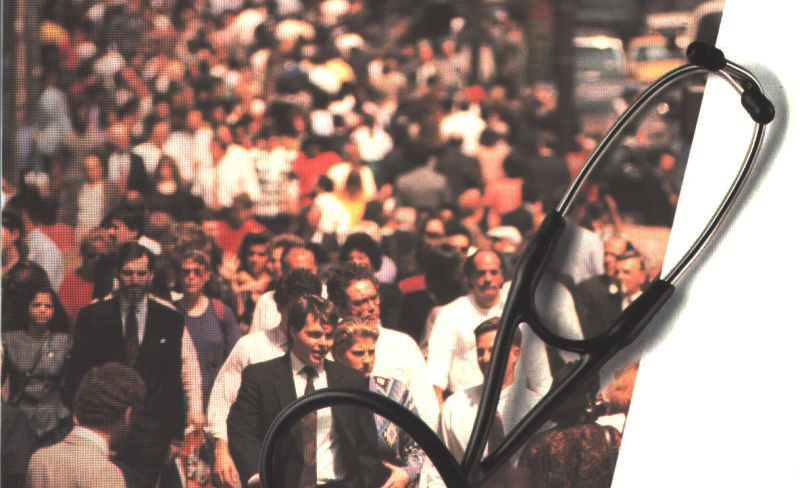
Box art for SimHealth. Courtesy of MobyGames.
Shortly after SimRefinery was completed, Maxis Business Simulations was approached by the Markle Foundation, a non-profit organization that tries to advance the public discourse around government, politics, and health policy. They had a radical proposal: they wanted to make a business simulation game for the public instead.
The Markle Foundation wanted to see if a game could educate people about a complicated policy issue. And in December 1992, there was no more relevant policy issue than health care. President Clinton’s election guaranteed that health care reform would become a highly contested topic in America, and for the Markle Foundation, it was the perfect time for an experiment – to see if games could be a future arena for public debate.13,46,47 “If people think the game is fun and interesting, we will try it elsewhere,” Markle Foundation president Lloyd Morrison told the New York Times, “perhaps with budget policy, welfare reform or the environment.”48
It was exactly the sort of provocative, socially relevant, personally significant game idea that Hiles wanted to create. With a $350,000 budget – nearly five times the cost of SimRefinery47 – it was the biggest project yet for Maxis Business Simulations, and it would put their ideas to the test in the public realm. Could a simulation game help people understand how the world works? Could it make you challenge your own assumptions about an issue as polarizing as health care reform?
The key was to make the player part of the story. Hiles believed that the reason SimCity was so compelling was that it let the players customize their city, which made the city simulation aspects of the game so much more meaningful.46 This was, in fact, a core part of the Maxis philosophy. “The fun and challenge of playing with our toys lies in exploring the worlds you create out of your own imagination,” Maxis wrote in one of their earlier product catalogs. “You’re rewarded for creativity, experimentation, and understanding, with a healthy, thriving universe to call your own.”49
In this new game, SimHealth, Hiles wanted to take that idea to another level. He wanted players to have to explicitly state their beliefs about health care – about individual liberty, or the importance of community – then see if they could overhaul the American health care system in a way that matched their ideals. He wanted the player to have to examine their own ideology and understand what that ideology might look like as a real policy.7
Just like SimRefinery wasn’t supposed to teach you how to run an oil refinery, this game wasn’t meant to accurately simulate the health care system. But instead, it was a way to see what could happen if you rewrote the laws of health care – and then question if that’s what you really wanted.7
Hiles talked about his vision in grandiose terms that the rest of the company struggled to wrap their heads around. There was an image he had in his mind that he kept sharing with rest of the team. It was a dinner plate with a meager bit of food on it – a pea, or a meatball – teetering on the edge. As the economy changed, the plate would get bigger or smaller, the food coming closer to the brink of falling onto the floor. It was supposed to be a metaphor for the precarity of the American family. Or something.9,44
Nobody really knew what to do with that.9,44 “Well, that’s a cool idea, but I don’t know how to do that,” Skidmore said he told Hiles, “and we’re not quite sure that gets across the intent.”9
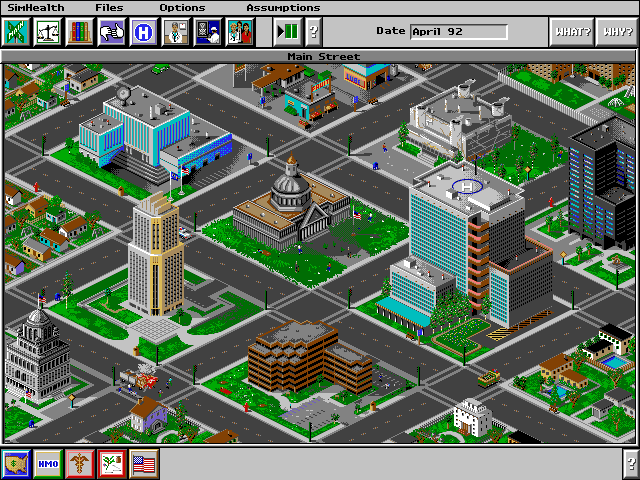
Main Street in SimHealth lets you see how your town is changing as the costs of health care are shifted between institutions.
Like Hiles’s other grand ideas, the Business Simulations team found a way to turn that into a playable game. Jenny Martin returned as the art director to advise Wibbens, and borrowing from the art style of SimCity, they drew a city that would respond to the economy, with buildings growing or shrinking, rather than a plate of peas. Hiles had originally wanted the pea plate graphic to be done in the style of a Works Progress Administration mural – creating a parallel between the health care debate and the social reforms of the New Deal – which would be a huge undertaking for that one picture. So Wibbens got to track down Bruce Ariss, a local artist who worked for the WPA in the 30s, and he painted a mural for the title screen instead. “I hope John kept that canvas, because we had it in the office up for a long time,” Wibbens said.44
“John had incredible ideas, and we had to knock him down to things that you could just implement,” Skidmore added.
Newcomer producer Greg Wolfson was tasked with the research phase of the game, and compared to learning about how a refinery or a power plant works, boiling down the entire health care system into a computer game ended up being an endlessly complicated task. “Basically, Greg Wolfson was driving himself nuts,” Skidmore said. “He became a health expert, and as he researched, he realized that there were 100 different factors that impacted the same particular element, and so we had to focus on what elements would have the most impact visually. Cause again, this was supposed to be a simulation training game.”9
“Greg Wolfson was a very good critical thinker,” Skidmore recalled. “He had a really good mind, in general, for detail, so he would ask questions like […] ‘Are we saying the right thing?'”9
The team always knew that their model would come under scrutiny. Skidmore acknowledged that no matter what they did, “there certainly was always going to be a perception of bias.”9 Hiles agreed that if people thought SimHealth was intentionally biased in any direction, they would “push it over into a ditch.”13 To counteract this, they let players look inside the simulation itself. SimHealth as an “Assumptions” menu, where you can view the hundreds of variables that power the simulation. If you disagreed, for instance, about the game’s predictions for the national employment rate, you could go in and change them yourself.
SimHealth was meant to be a tool that could guide the debate around health care – as long as the players understood how it was meant to be used. But once it was in the public’s hands, all bets were off. Like John Hiles told an internet talk radio program in 1994, “I’ve never met anyone who read a manual to start playing a game.”46
“A Tool For National Debate”
As the launch deadline from the Markle Foundation grew closer, SimHealth needed more help, and Maxis hunkered down. Mike Perry and longtime Maxis tester Kevin O’Hare were called in to help fix things; the lead engineer from Business Simulations, Richard Rosenbaum, would periodically drive two hours up to Maxis’s office in Orinda to work more closely with the team. There was a lot riding on SimHealth for many different organizations, and getting it into any acceptable state of completion was an ordeal. “Trying to coordinate Orinda, MBS, Markle, marketing, etc., all while trying to get an incomplete product finished was a challenge,” Perry said. “There were a number of stakeholders that needed to approve most aspects of the product. Even the box art was subject to external revisions and reviews.”19
It still wasn’t ready for release, but they had to move forward. The Markle Foundation would still hold a high-profile launch event for lawmakers in Washington D.C., as planned, but the public version of SimHealth wouldn’t roll out until four months later.19,47
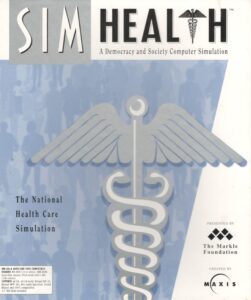
The unpolished pre-release version of SimHealth had a different box art that billed the game as “A Democracy and Society Computer Simulation.” Courtesy of Clint Basinger.
SimHealth debuted in November 1993 at a press conference on Capitol Hill as part of a publicity stunt targeting the American government.47,50 The Markle Foundation gave copies of an early version of the game to congressional staffers and the White House;48 Perry remembered that Maxis actually got a call from the Secret Service asking for help getting the game running on Chelsea Clinton’s computer.51
Although it was the most popular game by Business Simulations – by default – SimHealth was not a success. Markle subsidized the cost of the game so it could be sold for $29.99, below the average price of a computer game, to help get it out into the public.47,48 (“No one is going to make money on SimHealth,” Hiles told the New York Times.)48 Still, it only shipped around 50,000 copies, far less than they hoped for.
Markle Foundation president Morrison blamed it on the game’s stilted marketing campaign, which focused on lawmakers rather than the public.47,48 Edith Bjornson from the Markle Foundation admitted in August 1994 that “the effect of the game on the quality of the debate was not on the scale we would have liked.”52
Although it was a certainly less successful than its stakeholders wanted, the game did get the attention of a narrower audience – academics, policymakers, and insurance companies. Using a game to learn about the health care system was a novel idea for them. The University of Missouri at Kansas City started using SimHealth as part of a certificate training program on health care administration.47 MetLife’s director of information and computer services called the game “pretty sophisticated,” and she said that everyone at the company who played it had “really enjoyed it and appreciated the educational benefits that can be derived from it.”53
Ultimately, the game got a public seal of approval from the White House. Jeff Eller, spokesperson for the President’s Task Force on National Health Care Reform, said it helped him understand how games can shape the public discourse. “I think SimHealth is an intriguing alternative,” Eller told the New York Times. “You can’t dismiss this as another Pac-Man or Tetris.”48
Hiles achieved his goal: they had gotten the word out about agent-based modeling. But with all this new attention, some people strongly disagreed.
No apologies
In the political journal The American Prospect, Paul Starr, a senior advisor on health care policy for President Clinton, wrote a scathing editorial that criticized not just SimHealth but the entire concept of simulation games. “SimHealth contains so much misinformation that no one could possibly understand competing proposals and policies, much less evaluate them, on the basis of the program,” Starr said. “Once the novelty of making health policy into a game has worn off, I doubt SimHealth will hold much interest. It certainly has no value in assessing health care reform.”
The problem ran deeper, Starr believed. Games like SimCity and SimHealth threatened to blur the lines of reality for players. Simulation games were “seductive,” he argued, and there was no clear way to understand how their models differed from reality. The Assumptions menu, in his mind, was far too impenetrable, “an unreachable black box” that most players would never look at. And so players would never question the math, just accept the game at face value. “What assumptions were buried in the underlying models?” Starr asked, “What was their ‘hidden curriculum’? Did a conservative or a liberal determine the response to changes in tax rates in SimCity?”54
In other words, we would accept the truth from faulty, inaccurate, or malicious simulation models because they’re fun, or because they seem smart. Social theorist Sherry Turkle called this problem the “abdication of authority” to a simulation.55 It’s exactly what Will Wright had feared. SimCity is a much more light-hearted game than SimHealth, yet it was still taken seriously enough to change the outcome of an election. SimHealth, meanwhile, was being marketed to Congress. Did it ever stand a chance to not be taken literally?
It gets to the heart of a question that followed Hiles for his entire career. Do we really trust a computer game to change how people think about the world?
While I was researching SimHealth in 2016, I spoke with John Hiles, and I gave him a chance to respond to these criticisms.
In Hiles’s view, it was everyone else’s fault for not getting it. It wasn’t about predicting the future; it was about understanding the relationships between a complicated network of concepts. He proudly had no apologies.
“[SimHealth] didn’t tell us what health care system to build,” he told me. “Certainly discussing the relation between justice and liberty doesn’t calculate the amount of money you should spend on improving Medicare. It doesn’t calculate the number of citizens that you want to cover who don’t have catastrophic disease protection in their insurance. None of that is present in the value projection.” The player had to think for themselves about what the results meant.
“Now, if you’re not thinking,” he continued, “then you’re just using the tool to either bullshit other people, make them think that you’re smart, or to just occupy your time and, you know, twiddle. So I’m not responsible for how people want to misuse human thought.” He made a lot of people angry, and frankly, he loved it, because it meant his games were challenging them. “I’m unapologetic about taking some of the wonderful things that are present in the world of games and translating them or projecting them into an area of real discourse and real social concern.”7
With SimHealth completed, Hiles and company would have a chance to piss off even more people. This time, it would be without Maxis.
. . .
5. Thinking Tools
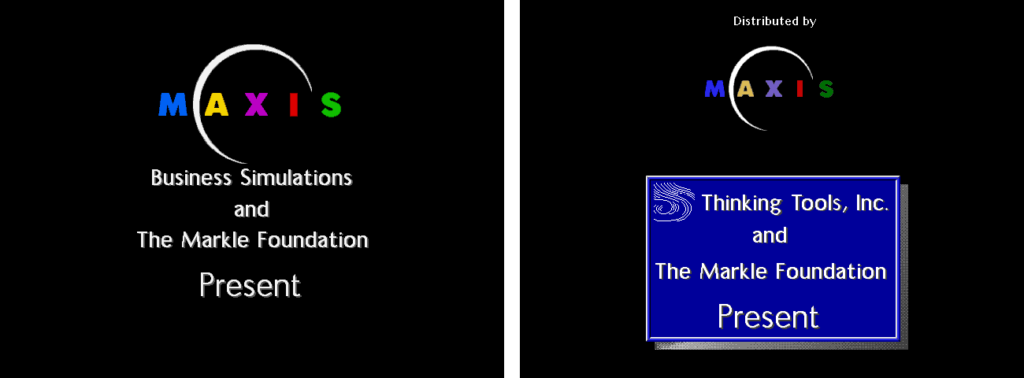
Before SimHealth was released, Maxis Business Simulations was spun off into its own company. The 1993 pre-release version of the game (left) still credits the company by their original name.
During the final development of SimHealth, Maxis axed their Business Simulations division.
Business Simulations had just become too much work for Maxis. Projects kept disappearing, like SimPower, and especially after the chaotic launch of SimHealth, it was too hard for Maxis to wrangle their clients. “We were spending more time negotiating contracts with these clients than developing the software,” Will Wright told CNN.18
“In those pre-internet days, Monterey seemed pretty far away,” Mike Perry recalled. “Outside of SimHealth, I don’t remember how many of us in Orinda other than Will and Jeff spent much time with them. We were kind of hoping to see another SimRefinery, a specialized SimCity-like game that let us graphically play with a complex system like a power plant or something. But since we never really saw many deliverables, I’d say most of the company accepted the split as a matter of course.”19
More than that, Maxis had decided that business games weren’t the direction they wanted to go as a company after all. “The Monterey team was disbanded because the gap between building simulations for entertainment and simulations for businesses was too great,” Braun explained. “One was a product, the other was a service.”20 As Will Wright told the magazine Architectural Record, “for us the main point was to develop programs that put the fun back into architectural and building software.” From time to time, Maxis would revisit the idea, “but the business model was almost certainly never going to work, especially for a public company,” Perry said.19
And besides, games like SimCity were already having a bigger educational impact than something like SimHealth.18 Maxis had made an educational edition of SimCity for schools,56 and according to Perry, they had run a contest called the “Future City Competition,” where kids got to design their own cities in the game and the winners went to the White House to meet President Clinton.19 So why did they need a serious games division?
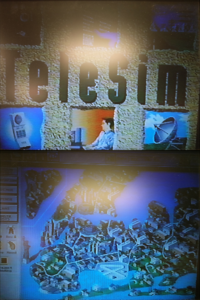
Two screenshots from TeleSim. These are off-screen photos, taken with a phone camera, of a VHS recording of a projector screen, so please forgive the quality.
Hiles bought out the Business Simulation division in January 1994, and SimHealth was eventually released with the new name for the company, Thinking Tools.34 Everyone got fancy new titles. Bruce Skidmore became vice president of engineering.10 And less than a year after she had been a middle school English teacher, Wendy Wibbens had now become the art director. She even got to hire her first employee, Kelly McFadden, a digital artist from Buffalo, New York.44
There was still some work to wrap up from the Maxis days. The company had been working on TeleSim, a simulation of how regional telephone companies compete for business. After the breakup of the Bell System that had monopolized the American telecom industry, the new smaller telecom corporations (the “Baby Bells”) were struggling to adapt to an environment where they actually had to compete with other companies. The consulting company Coopers & Lybrand had been working with two of the Baby Bells – Pacific Bell in California and NYNEX in New York – so they commissioned a simulation game to help teach them about how to compete in a crowded marketplace.9,34,36,44
TeleSim sounds like it was the most game-y simulation that Thinking Tools had made up to that point. Up to eight computer-controlled telecom companies would squabble with the player over their market territory, while SimCity-style disasters like earthquakes and fires break out, forcing the companies to adjust. Like everything else by Thinking Tools, it came with an elaborate visual metaphor, courtesy of John Hiles – “a boardroom painting of a sailing vessel steering boldly into the wind – or sinking.”34
Project Challenge
Many of the projects at Thinking Tools still kept the Sim name, at least internally.7 But with their newfound independence, the company was free to take their philosophy in a new direction, unconstrained by the expectations of working for Maxis. The scope of their games had continued to grow, with an average project now costing upwards of $350,000, as large as the budget for SimHealth.34 They did more work for the military, like LogLab, a logistics simulation led by Thinking Tools engineer Dan Riddle.1,44
Their big game as an independent company was Project Challenge, a project management training game developed for the tech firm SHL Systemhouse.1
The Hiles family recovered an interactive demo copy of Project Challenge, which would have been given out to prospective customers. For the first time since the game’s release in 1996, we have a chance to look at it up-close. This is now the only other game by Thinking Tools that has ever been seen publicly.
Project Challenge was supposed to teach managers how to keep their projects on track. There’s lots of graphs and budgets, but another big element was managing the people on your team. They would fall into conflicts that might require closer attention to improve their interpersonal skills, or they might need to be re-negotiated to stay on the team if they accepted an offer from another company. They speak robotically about their feelings. It’s dry business management material, but maybe it’s just what a business struggling with project management would have wanted out of a game.
You can see the similarities to SimHealth almost immediately. The art style and the interface are nearly identical, even reusing some of the same window layouts and icons. This was how the Thinking Tools house style evolved after they separated from Maxis. Wibbens served as art director on Project Challenge, bringing her influences from SimHealth, though she says McFadden was responsible for much of the actual art.44
The game is heavy with the sort of heavy communication metaphors that John Hiles loved putting in his games, like your team members who wear buttons that literally describe their emotions with happy faces or sad faces. This was part of Hiles’s desire for the company’s simulation games to “flood [you] with feedback,”46 but the production in Project Challenge is much more ambitious than SimHealth. You can read the unsubtle body language of your employees as they accusingly gesture at the other members of the team, one of whom seems to have trouble staying alert during a team meeting. The game even seems like it would have been fully voice-acted, an unexpected addition to a business simulation game.
And of course, that painting of the sailboat from TeleSim shows up again too.
Race for the White House
Thinking Tools was emboldened and taking more risks. However, there were still limits to what they could do and what people would accept. The most notable case was a failed project they developed for their old friends at the Markle Foundation, Race for the White House. Everyone I spoke with who worked on Race for the White House remembered it as a spectacular disaster.7,9,44
Despite the shortcomings of SimHealth, the Markle Foundation still loved the game, and they wanted to work with Thinking Tools again to continue exploring their ideas about games and public policy.9 They signed on to co-produce a new series of games called PowerTrip, which were going to “enhance civic dialog” around topics like political campaigns and foreign policy.57 Race for the White House must have been the first of these, as well as the last.
The Markle Foundation had requested a simulation game about the dynamics of political campaigns in the United States. Players would take on the role of a campaign manager with a limited amount of political capital to spend to get things done, and along the way, they would learn about the forces at work behind-the-scenes in politics, like money and lobbying influence.9 By the time a prototype was delivered, the project had run amuck. Rather than being a simulation with charts and menus, it was going to be a first-person adventure in the style of Myst, complete with live-action film sequences and voice actors. “It was… very ambitious on our part,” Skidmore recalled, sighing. “We didn’t have the resources at all for that kind of thing. Looking in hindsight at the time, it was like, ‘Oh sure, we can do this!'”9
On top of that, Hiles had taken the message of the project too far. “I made the mistake of bragging that [Race for the White House] would help people to understand that given enough money and a dog that looked like Rin Tin Tin, you could make Rin Tin Tin become the president,” he said.7 The Markle Foundation wanted something that would ask challenging questions about American politics,9 but not like that.
Between the bizarrely failed Myst approach and the bleak message, it was too much for the Markle Foundation. “They were horrified and shocked and said, ‘We can’t have our name associated with that!'” Hiles said. “They actually had it destroyed, the entire stock, the entire product.”7
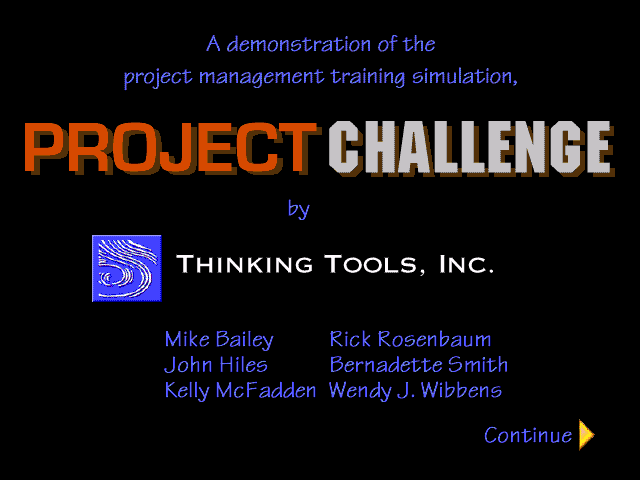
Thinking Tools had reached 15 employees by 1996,10 but they stayed small and close.
Thinking Tools was a close-knit company, especially as Wibbens remembers it.44 John, the Bruces, the Gregs, and a few other people like Richard Rosenbaum had been working together for nearly a decade as the company continued to grow, weathering the transition into an independent business.
On a personal level, Thinking Tools reminds me of my dad’s small business, formed by three partners who jumped ship from their old employer after their division was shut down. It’s grown and shrunk over the years, employees coming and going as their financial situation changed, but they’ve maintained their core, the same people who have worked together for now thirty years – not quite a family, but with bonds stronger than just being co-workers.
That’s the reality of running a small business. You look out for each other. “[John] really took care of us all,” Wibbens recalled.44
The close bonds of the company were tested when they were hit by an embezzlement scandal, when they discovered that their long-time bookkeeper had been stealing from them for years. It remains a painful, sensitive topic for the Thinking Tools employees, who asked not to discuss the incident in detail. But it underscored how much they had come to depend on each other, this unconventional tech startup in a small military town along the central coast of California.9,44
John Hiles was fiercely proud and protective of Thinking Tools, and when we spoke, he elided over the bad times for the company. But they’re vividly remembered by his colleagues – the gradual dismantling of Thinking Tools at the hands of venture capital.
. . .
6. Collapse
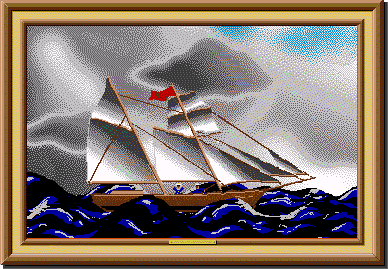
Thinking Tools took on a bunch of projects. Just like when they were Maxis Business Simulations, many of them had a habit of not panning out.
There was TransPort, a transportation network model for Texas Instruments; the mass social behavior model Sugarscape for the Brookings Institution; an unrealized triage simulator for the Tripler Army Medical Center in Hawaii;13 some kind of decision-making simulation called PEG.8 They had worked on The Justice System for Harcourt Brace, designed to simulate the flow of the criminal justice system as a companion to a textbook about criminal justice,1 but Bruce Skidmore says it never got off the ground. They had a deal with the parent company for TJ Maxx, but that never happened either. Systemhouse started work with Thinking Tools on a follow-up to Project Challenge about arranging office spaces, but that project quickly ended too when it couldn’t live up to the original concept.9,44
Hiles was the heart of Thinking Tools, but his tendency to think in terms of big ideas and metaphors made it difficult to operate as a business. With Hiles so often on the road, Skidmore found himself running the day-to-day of the company.9
“As genius as John Hiles was, the way I look back on it was the piece that he was missing was having a partner who was a really savvy businessperson,” Wibbens said. “John really couldn’t be bothered with the details of running the business. His mind was above all that, and rightly so, but that kind of hurt us off and on.” The producers at Thinking Tools – Greg Wolfson, Bernadette Smith, and Debra Louison Lavoy – were essentially acting as translators for Hiles to turn his visions into tangible products that the company could actually make.44
In a big swing for new investments, Thinking Tools went public on NASDAQ in 1996.10 As they faced the scrutiny of their board of directors and new shareholders, it became clear that if the company was going to continue, they needed to change how they did business. “The perception was, and some of it is true, is that we were struggling trying to keep enough of these boutique-type consulting projects [going] to build to a successfully funded company,” Skidmore said.9
In December 1996, Thinking Tools brought in a new president and CEO, Phillip Whalen.
The last project
Whalen had been the vice president of European operations as a company called Digital Tools58 – a bonafide tech executive – and he immediately set about putting his own imprint on the company. He brought in his own staff to run finances and human resources. He ousted Skidmore and Wibbens from their job titles, installing his own vice president of engineering and art director. He decided that Monterey was “a dead end,” as Skidmore described it, and that the company would need to relocate to Silicon Valley, starting with a sales office.9,44
Change was necessary and inevitable for Thinking Tools, but the sudden overhaul to this close-knit company rubbed people the wrong way. “We all kind of loathed this group that had come in and tried to notch themselves in,” Wibbens said. “Even though we all knew that there was a need for some of that, we didn’t think that this one had their heart in the right place.” Wibbens had particularly harsh words to say about their new art director, who she described as a “loathsome, offensive person” who terrified the office with his uncouth behavior. “It was like… no no no, this can’t be. We’re not gonna have to live like this, are we?”44
Whalen’s top priority was to come up with a new business model for Thinking Tools, while still taking advantage of the company’s strength for designing simulation games. With input from Hiles, he devised an idea for a new product, a simulation to help companies analyze the impact the Y2K bug could have on their business.9,59 It sounds like a spiritual successor to Project Challenge, but instead of being commissioned by a specific company, like Thinking Tools had always done, it was a general product that they could sell to any business.
Think 2000 was a Hail Mary to change the business model of Thinking Tools, from tailor-made simulations to being a high-end office software company.
It sold one copy.
“Maybe two, I dunno,” Skidmore said. “It wasn’t enough.”9
At the end of Q1 1998, Thinking Tools reported zero revenue.60
Exit plan
The writing was on the wall for Thinking Tools. The new direction didn’t work. Whatever Hiles’s weaknesses as an executive, he had a vision for the company and the future of software, and now there was nothing, except the hollow business logic that caused them to lease out a seemingly unused sales office in Silicon Valley.
For Hiles, the top priority was taking care of his employees – the people who had believed in his wild ideas and supported him since his days at Digital Research.
Hiles entered negotiations with BiosGroup, an agent-based modeling company in Santa Fe, New Mexico, to buy Thinking Tools and preserve everyone’s jobs.9 The sale was nearly finalized, and the president of BiosGroup had even come out to Monterey to meet them. But the chairman of the Thinking Tools board, Fred Knoll,58 allegedly got in a personal spat with the head of BiosGroup and abruptly canceled the deal. The new Thinking Tools leadership realized that their employees were looking for a way out, and they set up a petty firewall, threatening to sue BiosGroup if the company tried to poach any of their staff.9
The final months of Thinking Tools sound like something close to purgatory, as the staff couldn’t leave, funding ran dry, and it became clear there would be no next project. A new executive, Moshe Zarmi, came onboard to figure out what could be salvaged; Wibbens described him in much kinder terms as a conscientious man, though one in an unenviable position as the teardown guy.44
At the end of 1998, Phillip Whalen gathered the staff together for a final meeting.
“Well, I wanted to bring you all together,” Wibbens remembered him announcing. “The good news is that you’ll be able to spend more time with your families this holiday.”44
“They couldn’t even pay severance,” Skidmore said, frustrated. Whalen told the staff to take home their office equipment instead. “That’s your severance.”9 It was the last insult, the ignoble end to the company at the hands of growth capitalism.
The employees of Thinking Tools did take some their work home, and they burned it. After they were let go, they got together for a bonfire, taking some of their project files, their pink slips, whatever papers they had around, and letting the past burn away.9,44
“Greg Wolfson, I remember, bringing stacks of things that he had worked on, and… just burning them,” Wibbens said, laughing.44
Aftermath
In the last days of Thinking Tools, Whalen was fired. Moshe Zarmi was left to handle the aftermath.9 The husk of the company was ultimately merged into GVI Security, a video surveillance vendor in Carrollton, Texas.61,62
As soon as Thinking Tools shut down and the coast was clear, Bruce Skidmore left town to join BiosGroup after all.9 Wendy Wibbens, the artist for SimHealth, oddly enough went on to work for the health care company Kaiser Permanente.44
John Hiles stayed in Monterey. He went to teach at the local military academies he had become familiar with, where he could continue exploring his ideas about agent-based modeling with some of his old colleagues. He worked at the Defense Language Institute – for a brief time with Mike Daily, another former producer from Thinking Tools – and then the Naval Postgraduate School.44 He served as advisor on a project at the NPS with Richard Rosenbaum called SimNavy,8,63 and he kept consulting on simulation games elsewhere, like SimIraq, a game he designed for the intelligence community.7
As you might expect, SimIraq really, really pissed people off. John Hiles couldn’t have been prouder.7
What happened to SimRefinery?
UPDATE 6/5/20: Shortly after this article was published, a friend of an anonymous retired chemical engineer came forward with a copy of SimRefinery and provided it to the Internet Archive (re-upload available here). Read more about the recovery of SimRefinery here. Some details in this article have been corrected based on new information learned from the game. For more findings about SimRefinery, please read this follow-up article. The original text continues below.
One of the biggest questions surrounding Maxis Business Simulations that’s followed me ever since starting this research is whether SimRefinery is still around somewhere. To my knowledge, there are no surviving copies, and that’s okay. Given how frequently this question comes up, I want to document my research for the sake of completion.
Mike Perry said that Maxis would have kept a backup copy of SimRefinery in a binder of floppy disks that held many of the master copies of their software. Perry said the binder was likely thrown out or lost when the studio moved to Emeryville in 2004. A second copy would have been kept in off-site storage; for all intents and purposes, this copy is missing or destroyed.64 None of the Maxis, Thinking Tools, or Chevron alumni I spoke with had saved a personal copy.
I reached out to several universities with chemical engineering programs in the Bay Area – including UC Davis, which definitely taught with SimRefinery in the 90s.35 None of them still had it around. Or if they did, it was so far deep in storage that nobody knew they had it and had no reason to look for it.
Through an unrelated connection, the family of John Hiles was able to get in touch with the engineers at Chevron Richmond. Even they don’t believe they have a copy anymore.65
Maybe somebody took it home with their office hardware severance package. As for any paperwork from Thinking Tools? There’s a good chance it went up in that bonfire.
Nobody held onto SimRefinery because it didn’t seem important. It was a one-off, somewhat unsuccessful training program for an oil refinery in California. In the grand scheme of Maxis, it was one of their least important titles, which has only now become an object of interest in the video game community because of its unavailability.
It’s not impossible that a copy of the game could eventually surface. As amazing as it would be to play SimRefinery, the thing is, maybe we don’t need to. Although it would be terrific to see the game up-close, in practice, SimRefinery would be a fairly accurate simulation of an oil refinery. What’s more important is that we understand the context around it. We can learn why it was made, how it was made, and what it meant to people. If we can learn about that, it’s less important to actually play the game.
. . .
7. Finale
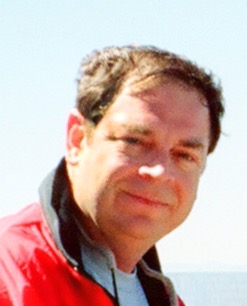
John Hiles.66
A few months after we spoke in 2016, John Hiles died suddenly from an aggressive brain cancer. “He was a polymath, an autodidact, and perhaps the gentlest person any of us have ever known,” his obituary reads. “We owe him so much.”66
John Hiles’s work was hidden from public view for his entire life. Despite leading a division at a now-acclaimed game studio, despite being interviewed by the New York Times – despite one of his games being played in the White House – Maxis Business Simulations and Thinking Tools were always a trivia fact, something mentioned in passing as a novelty in an article about SimCity. Whenever I spoke with an employee from Maxis or Thinking Tools, they were shocked to hear that Hiles had passed away, having now been out of touch with him for years as their time working together seemed to slip further into the past.
But like his one-time boss Will Wright, Hiles had big ideas in mind. He wanted to explore what computers could do, how they could inform us about the world we live in. He saw a connection between the advanced simulation modeling work happening in Silicon Valley and the fun, playful software coming out of the video game industry, and in the face of the resistance his company faced in public and private, he wanted to bring those worlds together. Thirty years later, as “serious games” and STEM learning have become buzzwords in games academia, the rest of the world seems to have caught up.
Perhaps it’s fair to say that Thinking Tools lived on a bubble of tech optimism, the notion that a new emerging technology could solve problems in society, and then the industry and their money would flock to another idea when the reality proved more complicated. Whenever a company announces that they’re going on the blockchain or using deep-learning AI, it feels like another iteration of that, the same sort of triumphant announcement as when Jeff Braun declared that business simulation games could be the future of Maxis, only for the company to abandon them less than a year later.
As a company, Thinking Tools struggled. Hiles was not a business leader, and the rest of his company knew that. He was the idea man, and ideas don’t pay the bills. But far from the company being an ego trip, as it so easily could have been for a tech leader with an unusual approach to their work, Hiles understood it was a team mission, all the way to the end when Thinking Tools was finally driven into the ground by tech industry capitalists. They were sharing this wild idea together, trying to make games that weren’t just fun approximations of the real world but would actively challenge how we thought about it.
It’s weird to think that those ideas resulted in games as odd as SimRefinery and Race for the White House. But it was a new vision for what educational games could be, not to make them work for us, but what they could teach us back instead.
. . .
Special thanks
This is the most in-depth article I have ever written. It was a long research process, and I owe a debt to a number of people:
- The family of John Hiles, in particular Susan Hiles, who has been unendingly supportive.
- Jenny Martin and the Maxis Alumni group for their kindness in providing access to the Maxoids.
- Mike Perry, for answering many questions I’ve bugged him with over the years.
- Jon-Paul Dyson, director of the International Center for the History of Electronic Games at the Strong Museum of Play, for sharing his correspondence with Jeff Braun.
- Kevin Bunch, for scanning the SimEnergy pitch documents for me while stay-at-home orders were in effect in Maryland.
- The Video Game History Foundation and the MAGFest MAGES communities, for their continued inspiration.
. . .
References
1. Thinking Tools. (n.d.). Projects for Partners. Retrieved from https://web.archive.org/web/19991111231328fw_/http://www.thinkingtools.com/html/products_for_partners_fs.html
2. Whitehead, Ingrid. (2000, March). Will Wright wants you to rule your own urban empire. Architectural Record, 188(3), p.246. Retrieved from LexisNexis
3. Maxis Software. (1995). Will TV. SimCity 2000: Special Edition.
4. Donovan, Tristan. (2011, May 23). The Replay Interviews: Will Wright. Gamasutra. Retrieved from https://www.gamasutra.com/view/feature/134754/the_replay_interviews_will_wright.php?page=3
5. Ito, Mizuko. (2012). Engineering Play: A Cultural History of Children’s Software. Cambridge, MA: MIT Press, p. 153. Retrieved from ProQuest Ebook Central
6. Delta Logic. ([1989]). Entryway / Astronomy [Video]. Courtesy of Susan Hiles.
7. Hiles, John. (2016, August 12). Phone interview.
8. Zyda, M., Hiles, J., Rosenbaum, R., et al. (1998). SimNavy – Phase 0: Building an Enterprise Model of the US Navy. Naval Postgraduate School. Retrieved from https://web.archive.org/web/20170809043437/gamepipe.usc.edu/~zyda/resources/pubs/SimNavyPaper98.pdf
9. Skidmore, Bruce. (2019, February 16). Phone interview.
10. U.S. Securities and Exchange Commission. (1996, October 18). Prospectus. Retrieved from https://www.sec.gov/Archives/edgar/data/1021444/0000950146-96-001829.txt
11. Poqet Computer’s Delta Logic takes wraps off its object oriented interface generator. (1989, July 9). Microbytes Daily. Retrieved from https://www.cbronline.com/news/poqet_computers_delta_logic_takes_wraps_off_its_object_oriented_interface_generator
12. Parker, Rachel. (1989, September 11). Poqet Recruits Support For Lightweight Laptop. InfoWorld, 11(37), p.8. Retrieved from https://books.google.com/books?id=xDAEAAAAMBAJ&lpg=PA1&pg=PT3
13. Hiles, John, & Epstein, Joshua. (1995, Oct. 20). Lessons learned from SimHealth: the promise and limits of health policy simulation [VHS], Special Collections Research Center, Estelle and Melvin Gelman Library at the George Washington University, Washington, D.C.
14. Greco, Susan. (1994, May 1). Looking for Mr. Right. Inc. Retrieved from https://www.inc.com/magazine/19940501/2910.html
15. Koebler, Jason. (2015, May 8). The Real Mayors of ‘SimCity.’ Vice. Retrieved from https://www.vice.com/en_us/article/ezv7wp/the-real-mayors-of-simcity
16. Kelly, Kevin. (1994, January). Will Wright: The Mayor of SimCity. Wired, 2(1). Retrieved from https://www.wired.com/1994/01/wright/
17. Will Wright collection, Brian Sutton-Smith Library and Archives of Play at The Strong.
18. Will Wright. (2000, January 20). CNN. Retrieved from http://edition.cnn.com/chat/transcripts/2000/1/wright/index.html
19. Perry, Mike. (2020, May 17). Twitter direct message.
20. Braun, Jeff. (2020, May 15). Email correspondence with Jon-Paul Dyson.
21. Siegmann, Ken, & Wildavsky, Ben. (1993, March 5). Simulations let companies solve complex problems. The San Francisco Chronicle, D1, D8.
22. Booker, Ellis. (1993, March 8). Simulations growing up. Computerworld, 27(10), pp.35, 37. Retrieved from https://archive.org/details/computerworld2710unse/
23. Maxis. (1992). Corporate Fact Sheet [Press release]. Retrieved from the collections at Game Informer magazine.
24. Barr, Christopher. (1993, June 15). Businesses Play War Games. PC Mag, 12(11), p.31. Retrieved from https://books.google.com/books?id=jMKfH6i9OcYC&pg=PA31
25. Burgress, John. (1993, April 23). The Realities of Simulations Mirror Work, Play Realities. The Washington Post, F13. Retrieved from https://search.proquest.com/docview/307639981
26. Touchstone, Terrell. (2017, July 10). Email correspondence.
27. Dyson, Esther. (1992, October 12). What if? Forbes, 150(8), p.142. Retrieved from http://search.ebscohost.com/login.aspx?direct=true&db=buh&AN=9210123858&site=ehost-live&scope=site
28. Maxis. ([1992]). SimEnergy — PROPOSED BY MAXIS. Scanned copy uploaded to https://archive.org/details/simenergy-pitch
29. Mizuko, p. 137.
30. SIMREFINERY – Trademark Details. (2001). Justia. Retrieved from https://trademarks.justia.com/743/89/simrefinery-74389727.html
31. Technology Briefs. (1993, April 11). The Plain Dealer, 4E. Retrieved from https://search.proquest.com/docview/291535171
32. Levy, Tom. (1993, March 5). Simulations let companies solve complex problems. The San Francisco Chronicle, D1. Retrieved from Beyond Sims on Flickr
33. Touchstone, Terrell. (1993, December 21). SimSchool Project [Usenet discussion on comp.simulation]. Retrieved from https://groups.google.com/forum/#!search/simrefinery/comp.simulation/fXYxYGytEBs/nyQFhktuYzgJ
34. Ditlea, Steve. (1994, November). Imitation of life. Upside, 6(11). Retrieved from https://search.proquest.com/docview/217963040
35. McDonald, Karen. (2017, August 2). Email correspondence.
36. Nelson, Jorge O. (1993, November). School System Simulation: An Effective Model for Educational Leaders. Memphis, TN: Memphis State University (ED 371 444), p.6. Retrieved from https://archive.org/details/ERIC_ED371444/
37. Louderback, Jim. (1993, March 1). Maxis industry-simulation packages don’t play games. PC Week, 10(8), p. 80.
38. Hendricks, Robert C. (1994, July 1). Environmental and customer-driven seal requirements. National Aeronautics and Space Administration, p.68. Retrieved from https://archive.org/details/NASA_NTRS_Archive_19950007175/
39. Martin, Jenny. (2017, April 25). Personal correspondence.
40. U.S. Department of Commerce, Economics and Statistics Administration, Bureau of the Census. (1990). 1990 Census of Population, Social and Economic Characteristics, California. p.6. Retrieved from https://www2.census.gov/library/publications/decennial/1990/cp-2/cp-2-6-1.pdf
41. Associated Press. (1991, June 11). Bush accepts base-closing recommendations. Santa Cruz Sentinel, C11. Retrieved from Newspapers.com
42. KCBA-35 News. (1991, November 3). Special report [Advertisement]. Santa Cruz Sentinel, 19.
43. Lydon, Sandy. (1991, May 12). Life after a military base closes. Santa Cruz Sentinel, D1, D3. Retrieved from Newspapers.com
44. Wibbens, Wendy. (2019, February 9). Phone interview.
45. Snyder, Steve. (n.d.) Career Portfolio, 1983-1992. Retrieved from https://www.stevesnyderdesign.com/games
46. Gunn, Moira, & Hiles, John. (1994, July 22). Tech: Technology and Health Care. Tech Nation. Recording retrieved from https://archive.org/details/RTFM-Tech-940722
47. MacPherson, Peter. (1995, December 20). Playing the game. Hospitals & Health Networks, 69(24), p. 82. Retrieved from https://search.proquest.com/docview/215311773
48. Passell, Peter. (1993, December 24). Pac-Man It’s Not. The Future of a Presidency and U.S. Health Care, Maybe. The New York Times. Retrieved from http://www.nytimes.com/1993/12/24/us/pac-man-it-s-not-the-future-of-a-presidency-and-us-health-care-maybe.html
49. Maxis Software. (1992). Maxis Software Toys Catalog.
50. Mitgang, Lee D. (2000). Big Bird and beyond: the new media and The Markle Foundation. New York: Fordham University Press, pp. 258-259.
51. Perry, Mike. (2016, July 28). One of us old Maxis folks should tell the story of when the secret service called our tech support in 1993 to help Chelsea play SimHealth. [Tweet]. Retrieved from https://twitter.com/mike_perry/status/758856064645214212
52. Angus, Jeffrey Gordon. (1994, August 7). Sim-Ply Fascinating — Simulation ‘Games’ Offer Real Educational Opportunities. The Seattle Times. Retrieved from https://archive.seattletimes.com/archive/?date=19940807&slug=1924051
53. Jones, David C. (1994, August 15). Simulation software tackles health care reform. National Underwriter, 98(33), 5. Retrieved from http://search.proquest.com/docview/228457061
54. Starr, Paul. (1994, Spring). Seductions of Sim: Policy as a Simulation Game. The American Prospect. Retrieved from https://prospect.org/environment/seductions-sim-policy-simulation-game/
55. Turkle, Shelly. (1997, March-April). Seeing Through Computers: Education in a Culture of Simulation. The American Prospect, 31, 76-82. Retrieved from http://web.mit.edu/sturkle/www/pdfsforstwebpage/ST_Seeing%20thru%20computers.pdf
56. Basinger, Clint. (2011, March 18). Maxis “Educational Version” Software. lazygamereviews. Retrieved from https://lazygamereviews.wordpress.com/2011/03/18/maxis-educational-versions/
57. Millison, Doug. (1995, April 12). daily spectrum 12 april 95 [Usenet discussion on comp.graphics.animation]. Retrieved from https://groups.google.com/forum/#!topic/comp.graphics.animation/cCoK7n82pHE
58. U.S. Securities and Exchange Commission. (1997, October 16). Prospectus. Retrieved from https://www.sec.gov/Archives/edgar/data/1021444/0000950146-97-001541.txt
59. Thinking Tools. (n.d.). Think 2000. Retrieved from https://web.archive.org/web/19980206102358/http://www.thinkingtools.com:80/html/think_2000.html
60. Thinking Tools, Inc. Announces First Quarter Results. (1998, May 1). PR Newswire. Retrieved from https://search.proquest.com/docview/447307426/A13E260FC00C48DCPQ/4
61. Thinking Tools, Inc. Acquires GVI Security, Inc.; Acquisition Positions Thinking Tools in $2.9 Billion Video Surveillance Market. (2004, February 23). Business Wire. Retrieved from Factiva.
62. Thinking Tools, Inc. Effects a Change in Name and a 65 to 1 Reverse Stock Split. (2004, April 14). Business Wire. Retrieved from Factiva.
63. Zyda, Michael. (1998, September 21). SimNavy – Phase 0: Building an Enterprise Model of the US Navy [Powerpoint slides]. Naval Postgraduate School. Retrieved from https://calhoun.nps.edu/bitstream/handle/10945/41520/SimNavyTalk98.pdf?sequence=1
64. Perry, Mike. (2016, October 9). Twitter direct message.
65. Hiles, Susan. (2018, July 1). Personal correspondence.
66. Obituary for John E. Hiles. (2016, December 28). Bermudez Family Cremations and Funerals. Retrieved from https://www.bermudezfamilyfunerals.com/notices/John-Hiles
67. Beeler, Jeffrey. (1986, October 6). Digital Research to form connectivity software unit. Computerworld, 20(40), p.180. Retrieved from https://books.google.com/books?id=botwBgcSATQC&pg=PA180

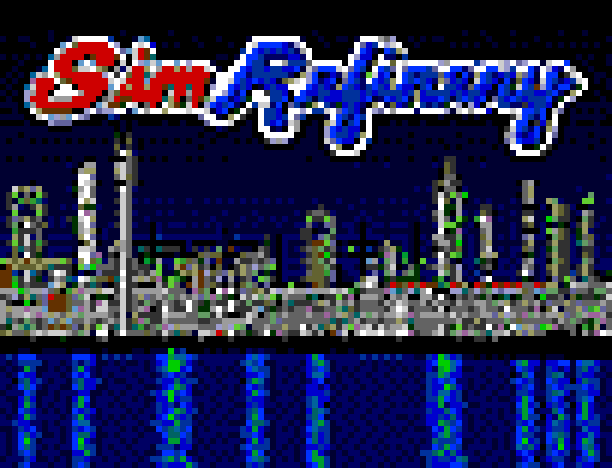
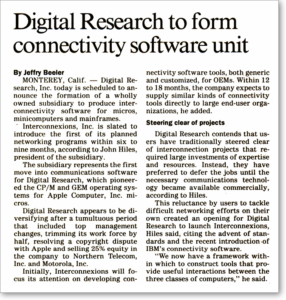
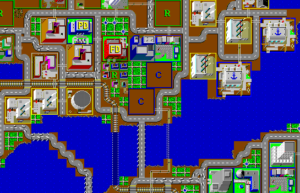
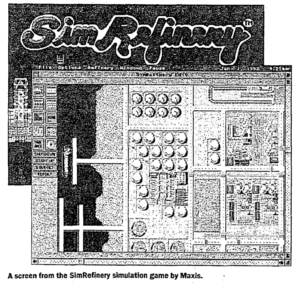
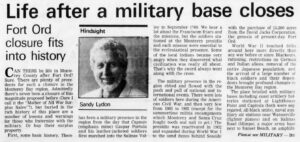
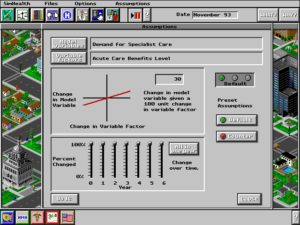
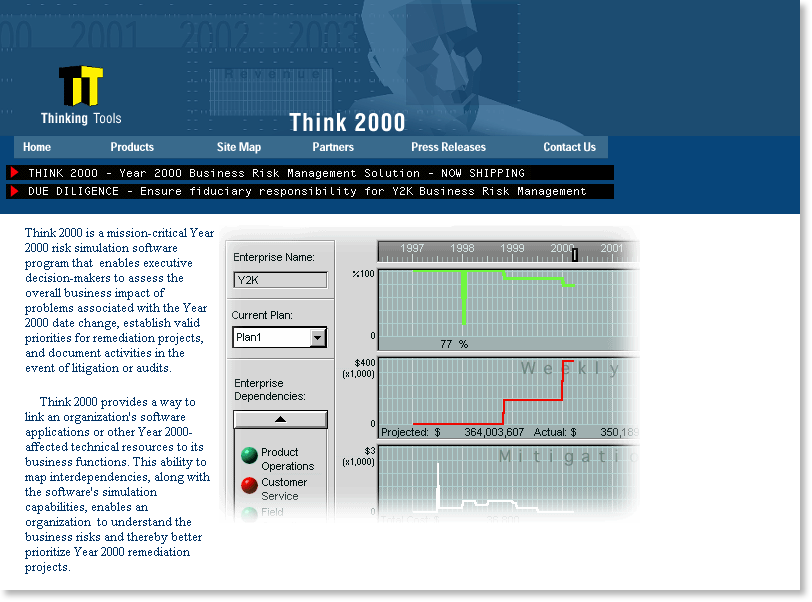
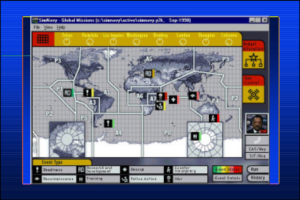
This article went really deep. Kudos to the author!
It must have been a great experience to go through. Is it weird that I envy him for it?
Fantastic read. In a lot of ways, the “lessons learned” by Maxis Business Simulations seem to be a foregone conclusion: “games” that aren’t fun as their foremost goal are difficult: finding players is one thing, and so is figuring out how to fund the significant development challenges of scoping and implementing stuff. Probably moreso then than now, with the way tech has advanced, but even so.
I love how this article kind of quietly lays out the possibility for a world in which MBS/Thinking Tools had an ace business strategist alongside Hiles, and the company actually managed to scope and deliver a catalog of business games like SimRefinery that quietly helped to shape an industry. It sounds crazy, and prior to reading this, I would’ve said “no way.” But after reading this, I think, just maybe, it could have worked.
This was a very insightful article about an interesting group of people and their work. Thanks for writing it!
A very interesting article, thanks.
I recognise the TT logo on the Think 2000 screenshot. Looking more closely I remember trying that software back in ’98 while working as a sys admin for a small IT company. The UI was a mess, it was expensive and I couldn’t see how it would be useful to us. Needless to say, we didn’t buy it. I had no idea they were connected with Maxis and several of my favourite games.
I also have a connection to the oil industry, having been a developer for a UK consultancy with Chevron among our clients. SimRefinery is not the first game produced by an oil company, I have a copy of North Sea Oil Rush – a board game released by BP in the ’70s. It simulates drilling for oil in the North Sea with players taking the role of one of the companies involved at the time. I was told by a former Exploration manager that it was played at the company.
Thank you. Just a sincere, grateful, spontaneous Thank you.
Hello, I have used many Simulator products such as Simcity Simcity 2000, Simcity 3000, and Simcity 4, as well as Simtower, The Chris Sawyer Games Roller Coaster Tycoon, Sid Meier Railroad Tycoon, These days I use Simulink at work and have used Dymola in the past.
I reccomend anyone interested in Business simulation Games from the 1990’s to look at Tsunami Media’s Epochal Classic ‘Free Enterprise’ which is available on Abandonia.
Thanks everyone for the kind words! It feels great to finally publish this.
One thing I wanted to comment on for the sake of the record: the story about the bonfire wasn’t meant to suggest there was some sort of great purge or destruction of the company’s record. It was just a party where they burned a bunch of stuff. The original wording was poor, and I’ve updated it to fix that, but I wanted to make sure I’m not giving the wrong impression since the original interpretation was picked up in a few places, including Wikipedia.
Thank you kind sir! Thank you to Clint (LGR) for retweeting this, and thus showing me the way. A lot of effort went into this and I was enthralled the entire time. Looking at Project Challenge made me want to play all the old sim games again, despite some inherent business anxiety that I got from just watching that vid!
Wow,, just wow, this amount of work is rare in this web era of journalism… Kudos to you guys, and thanks to Ars Technica for bringing it to me.. Any plan for a book maybe ..?
Really spectacular work! Well-written, incredibly detailed. A joy to read.
A very excellent, well researched and most importantly – well written piece. Saved it to reread again tonight as it jostled a lot of old memories that will circulate in my head today. Pretty sure that rereading it tonight will feel even more rewarding.
Stay safe and be well…
Thank you for writing this article about a weird, amazing, reach-for-the-stars company and person. So much of the really innovative work in the Valley never sees the light of day because it did not hit the mark according to some key measure. Keep inventing, John Hiles, wherever you are!
Outstanding research and a great read overall. Love that you’re shedding light on something so overlooked. I’d never heard about these games before. It sounds like John Hiles was a very interesting guy and I’m sad to hear he’s passed.
Has anyone from ArsTechnica contacted you about this? https://arstechnica.com/gaming/2020/05/the-sprawling-must-read-history-of-maxis-former-serious-games-division/?comments=1&post=38913520#comment-38913520
Great read Phil, I love these kind of indepth game history articles! Cheers!
what a great history, i so moved when read the side of history maxis
I did see that comment on Ars Technica! That’s potentially really exciting. It sounds like right now, we’re just waiting to see what happens. If there’s any developments with that, I’ll absolutely update here. I still believe what I said in the article that we don’t necessarily need a copy of the game to learn the history around it, but it would be a very, very exciting bonus. (I think I’d almost be most excited about seeing the credits?)
This was really wonderful. Thank you.
Fantastic deep dive. Thank you
My wholehearted agreement with others here with regard to the level of research and depth of content lavished upon this piece. I adore tales like this and I think it present opportunities for learning about both the pitfalls and potential of applying interactive modeling to all sorts of persistent systemic issues. The fact that a simulation highlights conflict and is vulnerable to bias only underscores the themes that have made these real-world issues so difficult to engage with. (And I think that was at least one of the team’s goals- just to get people thinking about the variables involved, however the outcome.)
Thank you for this!
wow this was great! Thank you for your hard work
Very deep dive, well written and researched, plus I didn’t know about most of it. Thanks.
Amazing research, congratulations.
Sim Refinery is now on Internet Archive!
https://archive.org/details/simrefinery
ArsTechnica commenter uploaded it;
https://arstechnica.com/gaming/2020/06/a-lost-maxis-sim-game-has-been-discovered-by-an-ars-reader-uploaded-for-all/
That was a incredibly article. I can’t remember when was the last time I’ve read something so good. If I had a magazine/website focused on gaming news/history, I would definitely want to have you on board xD
I wish more of those games get recovered – specially the one who had pissed off people xD
Great piece!
I noticed that the Made for Macromedia logo was displayed at the end of the walkthrough video for Project Challenge that you linked to, so I searched for Thinking Tools in the Made with Macromedia database that is available on the Internet Archive. I only found one record, and it was indeed for Project Challenge. The record shows that, as of 12/19/1996, Macromedia hadn’t received the title yet, unfortunately. That means it probably isn’t in the physical archive donated by Adobe–but you never know! Whenever I picture that massive collection of CD-ROMs (from a huge cross section of developers) that IA is sitting on, I’m reminded of the “Rosebud” scene from Citizen Kane.
You might find the Made with Macromedia database to be a useful research tool since it contains a lot of information on dates, locations, and contacts for developers and publishers of that era. I was able to download it from here: https://archive.org/details/MacromediaCdCollectionMetadata
The data is collected in three separate FileMaker databases, and I was able to open them using SheepShaver (a MacOS 9 emulator) and a readily available copy of the app.
Thank you for checking that Richard! That’s a great resource to know about, and even though Macromedia didn’t receive a copy, it’s cool to see an echo of their software in another place like that.
Thank you so much for this detailed history, and heartfelt insight into their vision, intent, and personal growth possibilities. As a developer on mobile versions of the Sims 2 Pets, and the Sims 3, it’s almost shocking to see the contrast in their approach and goals.
Thank you so much for doing the research and telling us the story of MBS, I sincerely hope that in the future we arrive at a point where simulations are widely accepted as teaching tools.
Great piece!
Late 1990s I was working at a very large government contractor. We talked to some of the SimHealth folks about building a version for the Nevada Test Site (nuclear waste repository in mountains upwind of Las Vegas), part of a larger DOE community relations contract. Funding never came through.
Hi Phil, great story! We are working on the history of the Enterprise Metaverse concept (serious simulations), can we get your permission to translate your article to Chinese and publish it on Chinese social media?
I don’t know how I stumbled upon this article but it is very amazing. Detailed, in-depth, interesting facts and good dramaturgy. Can I buy you a coffee? 🙂
You forgot an important part here. McAfee tried to buy Thinking Tools at the end and some folks, not to mention any names, derailed the acquisition talks intentionally because they didn’t want to be acquired by a large, evil company.